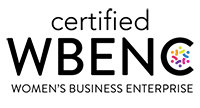Key Tariff Changes Effective August 7, 2025
A new chapter in U.S. trade policy began on August 7, 2025. A series of sweeping tariff measures—introduced through late-July Executive Orders— are now in force, reshaping the landscape for freight forwarders, importers, and global supply chain stakeholders
These updates bring a reciprocal tariff regime, remove long-standing duty exemptions, and tighten transshipment enforcement—all requiring immediate operational adjustments.
Below is a breakdown of the most critical updates, exemptions, and next steps for logistics professionals.
Changes Taking Place
1. Reciprocal Tariff Framework Introduced
- 10% baseline tariff now applies to most countries without specific trade agreements, on top of MFN (Most Favored Nation) rates.
- 15%–50% higher country-specific tariffs for over 60 nations (see Annex I of the Executive Order).
- EU-origin goods: Conditional 15% tariff if MFN rate is below that threshold.
2. De Minimis Exemption Eliminated for Non-Postal Imports (Effective August 29, 2025)
- The $800 de minimis threshold will be eliminated on August 29, 2025 for non-postal shipments.
- All non-postal shipments valued at $800 or less must be formally entered via ACE and will be subject to:
- Ad valorem duties (based on new reciprocal tariffs)
- Standard customs processing requirements
- Postal shipments (sent via international postal networks) will face transitional treatment:
- Phase 1 (Aug 29, 2025 – Feb 28, 2026): Flat duties of $80–$200 per item based on country of origin
- Phase 2 (Starting March 1, 2026): Full ad valorem tariffs based on product value and country-of-origin tariff schedule
Note: De minimis was already eliminated for China and Hong Kong on May 2, 2025.
3. Copper Tariffs Raised to 50%
- Semi-finished and derivative copper products now face 50% tariffs (effective August 1, 2025).
- Excludes: Refined copper, raw copper ores, concentrates, and copper scrap.
- New domestic content rules expected within 90 days from the Department of Commerce.
Country-Specific Highlights
Mexico
- 90-day extension delays the 30% increase originally planned for Aug 1.
- Current tariffs:
- 25% on vehicles (fentanyl emergency-related)
- 50% on steel, aluminum, and copper
- Extension negotiations ongoing; no formal executive order yet issued.
Canada
- 35% tariff notification under Reciprocal IEEPA for Aug 1 — pending CBP or White House confirmation.
- USMCA-originating goods are expected to be exempt (unconfirmed).
India
- 30% reciprocal tariffs on most goods, effective Aug 7.
- Strategic categories may face tariffs up to 40%.
- Goods in transit before effective date may qualify under transitional provisions.
Stricter Transshipment Enforcement
- 40% penalty tariff on goods deemed to be transshipped to avoid tariffs.
- Violations may also result in fines and legal sanctions.
Tariff Exemptions
- Exempt from new higher tariffs:
- Goods in transit before Aug 7 (per Executive Order definition)
- Customs entries filed before Oct 5, 2025
- Items already covered by Section 232 tariffs
- Articles in Annex II, including:
- Pharmaceuticals
- Semiconductors
- Lumber
- Critical minerals
- Select energy products
Practical Guidance for Forwarders & Supply Chain Teams
1. Review At-Risk Shipments Immediately
- Audit in-transit shipments
- Confirm HTSUS classifications & country-of-origin documents
- Identify and mitigate transshipment risks
2. Update Compliance & Customs Procedures
- Prepare for August 29: Remove reliance on de minimis for small-parcel imports from all countries
- Ensure timely, accurate customs entries for all shipments
- Update systems for formal entry processing of previously exempt shipments
3. Strengthen Client & Supplier Contracts
- Add flexible terms to manage tariff volatility
- Clarify cost liability for changes in rates or sourcing
4. Adjust Logistics Strategy
- Prepare to shift routes or modes
- Consider bonded warehouses, duty suspension zones, and eFBLs
5. Engage Clients Proactively
- Reassess sourcing strategies, pricing models, and production timelines
- Develop contingency plans for further policy changes
Final Thoughts
The August 2025 tariff updates mark a major shift in U.S. trade policy. While certain measures remain fluid, the immediate impact is clear: businesses must adapt quickly to mitigate risk and maintain supply chain stability.
Key upcoming date: August 29, 2025 — when de minimis elimination takes full effect globally.
At PGL, we’re here to interpret these changes, adjust workflows, and protect your bottom line. Our team operates 24/7/365—ready to keep your freight moving
RELATED POSTS
PGL Video Newsletter – September 2025
Publised: October 6, 2025
September 2025 Newsletter September was a strong month for PGL, filled with milestones and momentum. We started the month honoring important moments — from Labor Day and Patriot Day, to […]
Supply Chain Industry Insights – September 2025
Publised: October 2, 2025
Industry Insights September 2025 By PGL Welcome to the PGL Industry Insights report for September 2025 Retail diesel prices have mostly leveled off after weeks of decline. While current […]
DHL Express Peak Season Demand Surcharge: What You Need...
Publised: October 1, 2025
DHL Express Peak Season Demand Surcharge: What You Need to Know As an Enterprise Partner and Authorized Reseller of DHL Express services, PGL is committed to keeping you informed of […]




